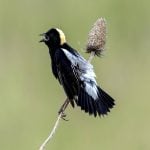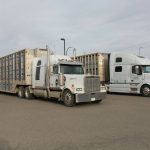Large numbers of closely related genomes in the same cell create a complex challenge, which has limited improvements made to the crop
Picture a prairie blue sky enfolding a few wispy clouds.
Now imagine trying to assemble a jigsaw puzzle of one genome with millions of pieces of DNA that look like that big blue sky.
That’s what researchers at the Global Institute for Food Security at the University of Saskatchewan are up against in their quest to unlock key genetic information for bromegrass, a significant forage crop for cattle.
“The challenge is working out where they fit in the blue sky. That’s the challenge of putting one of those (puzzles) together because there’s a lot of DNA that’s actually very similar to just one of those genomes,” said Andrew Sharpe, GIFS director of genomics and bioinformatics.
Read Also

Agri-business and farms front and centre for Alberta’s Open Farm Days
Open Farm Days continues to enjoy success in its 14th year running, as Alberta farms and agri-businesses were showcased to increase awareness on how food gets to the dinner plate.
He said the difficulty with bromegrass is that each genome in a variety represents its own puzzle and when sequenced, the pieces of those puzzles are mixed together and need to be reassembled and ordered. In smooth bromegrass, which has eight genomes, there are eight puzzles to solve, while meadow bromegrass has 10 to solve.
For a long time, genetic improvements to bromegrass have been constrained by the size and complexity of its genome. Large numbers of closely related genomes in the same cell create a complex challenge in sequencing.
There was also a lack of efficient sequencing tools to determine the order of DNA molecules.
“It’s one of the reasons why there’s been more limited genomic resources developed in the crop,” Sharpe said.
However, cutting-edge sequencing tools will speed the process and help complete the puzzle.
“The new technologies reduce the complexity of the puzzle that we’re putting together. So rather than it being a million-piece puzzle, it’s a thousand or a hundred pieces,” he said.
“It gives us a much more robust genome assembly that we have high confidence in as being a true representation of the genome that we’re studying.”
“Primarily DNA sequencing instruments are able to decipher these very complex genomes in quite a cost-efficient way. So the newer technologies are actually getting these very long stretches of DNA resolved…. You can actually stitch them together quite effectively. And those long reeds really help to decipher which genome that you’re sequencing,” said Sharpe.
GIFS was recently awarded more than $330,000 from Saskatchewan’s Agricultural Development Fund for the project to find missing genetic information for bromegrass.
The four-year bromegrass program also received support from the Saskatchewan Cattlemen’s Association and the Saskatchewan Forage Seed Development Commission.
With more genetic information, it is expected breeders can more quickly develop bromegrass varieties with better yield, environmental stress tolerance and quality.
Research findings may also allow breeders to select the most nutritious and resilient varieties of bromegrass, which would extend pasture productivity and increase yield while improving sustainability through carbon capture.
Genomic resources available for other crops have not been available for bromegrass, which has affected the ability of breeders to improve the crop.
“Our goal is to build a catalogue of genetic information that will allow breeders to be efficient in their targeting of desired traits and provide a boost to the beef industry,” Sharpe said.
















